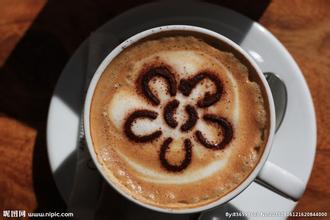Columbia Rosa Starbucks Coffee Bean Price Geisha Flavor description method introduction to the taste of varieties
Introduction of Rosa coffee beans
Rosa coffee raw beans have a very beautiful blue-green, jade-like warm texture, smell fresh grass, peach, berry flavor and oolong tea unique milk sweetness that most coffee beans do not have. it seems that aroma and taste of this kind of things need to be associated, but the faint smell of tea is obvious to us [1].
In order to highlight the characteristics and aroma of this bean, the baking degree is on the verge of two explosions, and two explosions and one sound are more commonly used baking degrees, which can give play to the characteristics of the beans themselves. If they are too shallow, they will produce miscellaneous smells. If they are too deep, they will lose the aroma of flowers and fruit acidity. Of course, this should be adjusted according to the characteristics of coffee beans and the roaster's understanding of the beans themselves. She is so extraordinary. The fruity and floral elements are almost like Yega Xuefei from Africa and Ethiopia on the other side of the world. Of course, these are all old news now. Some small farms also get summer roses and are eager to grow their own roses.
However, the results are different, and this "star" variety seems to have different tastes in different geographical locations due to the influence of weather, soil and altitude. However, in the Aktenango area, we see typical rosy summer features: the slender shape of beans, the changes during baking, and the elegant and uncooked flavor in the cup.
David Piza C, who majored in industrial engineering from the University of Los Angeles at Bogota, is a professional coffee cup tester and judge of the barista competition in Colombia. When he came to China in August this year, he brought a variety of high-quality manor boutique coffee, including Geisha of Colombia. The author bakes the coffee according to the raw bean information provided by Pei Daxing and the expected baking curve in his mind. To the surprise of everyone present, compared with the samples brought by Pei Daxing, the Gesha baked by the author can hardly be seen with the naked eye. Although Pei Daxing did not take out the samples they had been thinking about baking in Colombia before the author baked it, it often happens that the Herrera family of Hope Farm in Colombia introduced rose coffee from the jade estate in Panama in 2007. Although it was a failure at first, it took years to try to grow it. In April 2011, he won the first prize in the American Fine Coffee Association's Annual Bean Competition (COTY-Coffees of the Year) in Houston. For more information, see the American Fine Coffee Association's 2011 Global Best Coffee Competition. According to the Panamanian Emerald Manor website, "Rose Summer" coffee seeds were taken from Geisha Mountain (Mount Rose) in southwestern Ethiopia in 1931 and transplanted to Kenya in 1931 ~ 32. It was replanted in Tanzania in 1936 and introduced to Costa Rica in 1953. It is unknown when it was introduced to Jaramillo Manor in Panama. After the Price Peterson family of Hacienda La Esmeralda Farm of Panama bought the Manor in 1996, they found that the coffee flavor in the edge of the manor was unique, so they participated in the 2004 Panama "COE" contest and never wanted to become famous. Since then, he has won awards almost every year. Later, it was identified that the variety originated from Ethiopia's "Rose Summer Mountain", so it was called "Rose Summer" coffee. Panamanian Gesha coffee sold for a sky-high price of nearly $290 per kilogram. Geisha is an Arabica coffee variety from Geisha Mountain in southwestern Ethiopia, which is transliterated as "Rose Summer". Because the Japanese pronunciation of "geisha" is similar to Geisha, Geisha is called "Geisha" coffee in Japan. I think it is easier to communicate with foreign countries by transliteration of "Rose Summer" in Chinese.

Important Notice :
前街咖啡 FrontStreet Coffee has moved to new addredd:
FrontStreet Coffee Address: 315,Donghua East Road,GuangZhou
Tel:020 38364473
- Prev

Introduction to the grinding treatment method for the flavor and taste characteristics of coffee brands in Ethiopia
Ethiopian Coffee Flavor treatment Variety characteristics growing in Western Ethiopia 4900-5900 feet (Wollega province) plateau, north of Jima, mostly wild, annual output is about 500000bags/60kg, export to G5/G4, bean body is larger and longer than Longberry, a little brown in green, taste similar to less jasmine tea, more bitter, lack of rising Hara, slightly sour
- Next

Introduction to the Flavor description characteristics of Fine 90 + Honey Kiss Coffee
Honey Kiss 90 + Coffee in 2009, this coffee was named after Nectar from Shakisso, meaning it has the same flavor as nectar from Ethiopia. Nekisse is characterized by a creamy and smooth taste, a strong berry sauce, and some batches even have a mixture of chamomile and a variety of tropical fruits. Although it was originally planted in Shakisso producing areas,
Related
- Detailed explanation of Jadeite planting Land in Panamanian Jadeite Manor introduction to the grading system of Jadeite competitive bidding, Red bid, Green bid and Rose Summer
- Story of Coffee planting in Brenka region of Costa Rica Stonehenge Manor anaerobic heavy honey treatment of flavor mouth
- What's on the barrel of Blue Mountain Coffee beans?
- Can American coffee also pull flowers? How to use hot American style to pull out a good-looking pattern?
- Can you make a cold extract with coffee beans? What is the right proportion for cold-extracted coffee formula?
- Indonesian PWN Gold Mandrine Coffee Origin Features Flavor How to Chong? Mandolin coffee is American.
- A brief introduction to the flavor characteristics of Brazilian yellow bourbon coffee beans
- What is the effect of different water quality on the flavor of cold-extracted coffee? What kind of water is best for brewing coffee?
- Why do you think of Rose Summer whenever you mention Panamanian coffee?
- Introduction to the characteristics of authentic blue mountain coffee bean producing areas? What is the CIB Coffee Authority in Jamaica?

